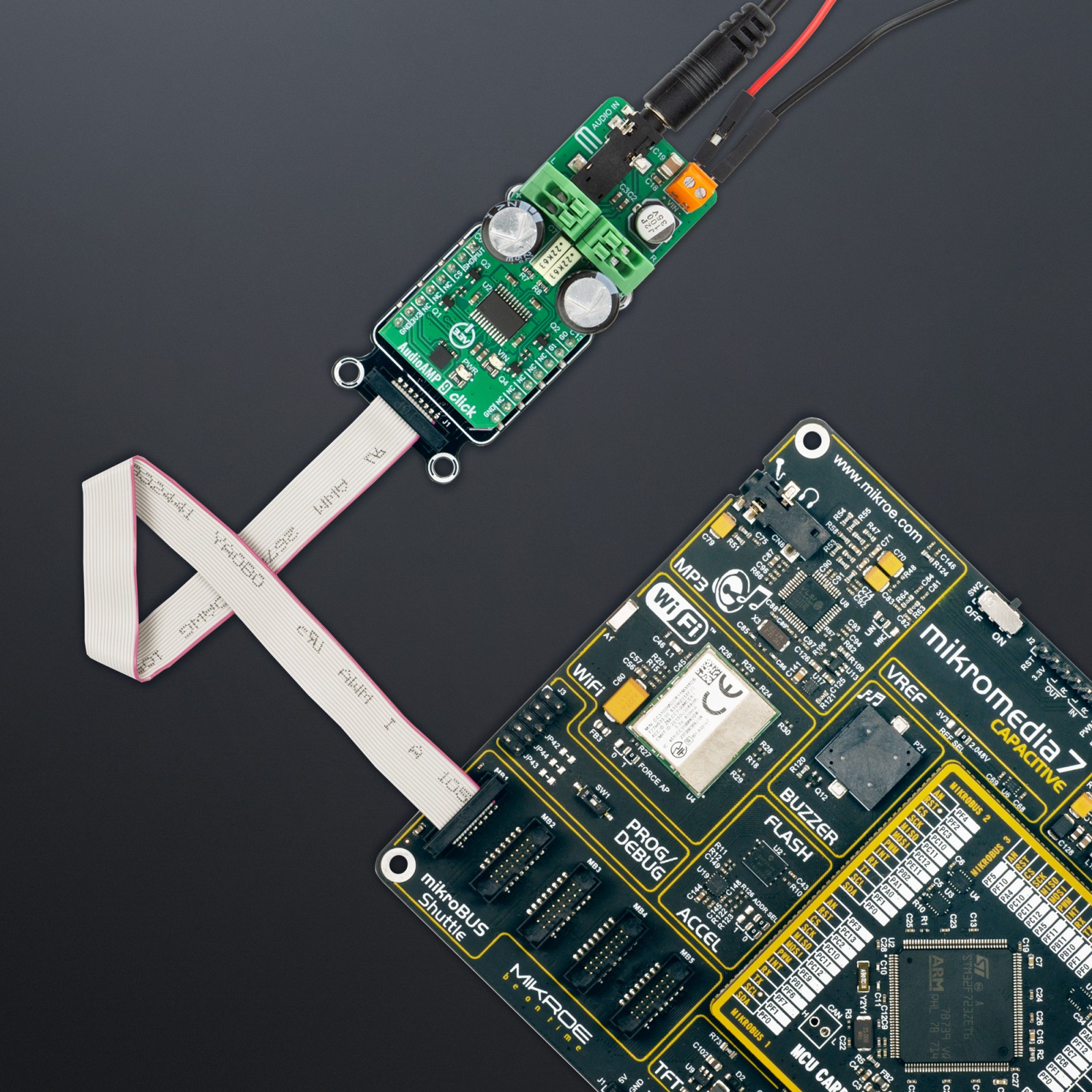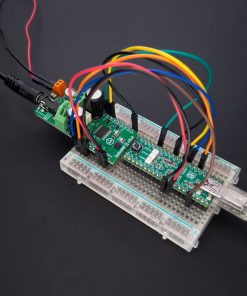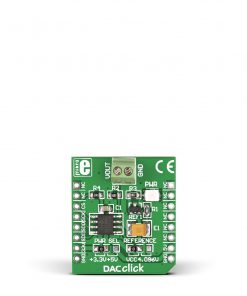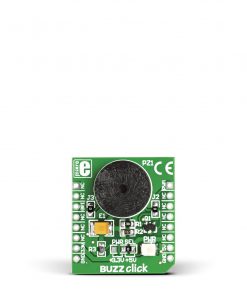AudioAMP 9 Click
R460.00 ex. VAT
AudioAMP 9 Click is a compact add-on board reproducing input audio signals with desired volume and power levels at sound-producing output elements. This board features the PAM8124, a 10W efficient, Class-D audio power amplifier from Diodes Incorporated for driving stereo speakers in a single-ended configuration. This GPIO configurable audio amplifier can drive 8Ω stereo speakers and provides configurable features such as Mute, Shutdown, and selectable gain of the amplifier. It supports external supply voltage from 12V to 24V, allowing it to be used in many applications. Besides, it is equipped with protection features, allowing a reliable operation. This Click board™ is suited for various types of consumer audio equipment applications.
AudioAMP 9 Click is fully compatible with the mikroBUS™ socket and can be used on any host system supporting the mikroBUS™ standard. It comes with the mikroSDK open-source libraries, offering unparalleled flexibility for evaluation and customization. What sets this Click board™ apart is the groundbreaking ClickID feature, enabling your host system to seamlessly and automatically detect and identify this add-on board.
Stock: Lead-time applicable.
| 5+ | R437.00 |
| 10+ | R414.00 |
| 15+ | R391.00 |
| 20+ | R376.28 |


























